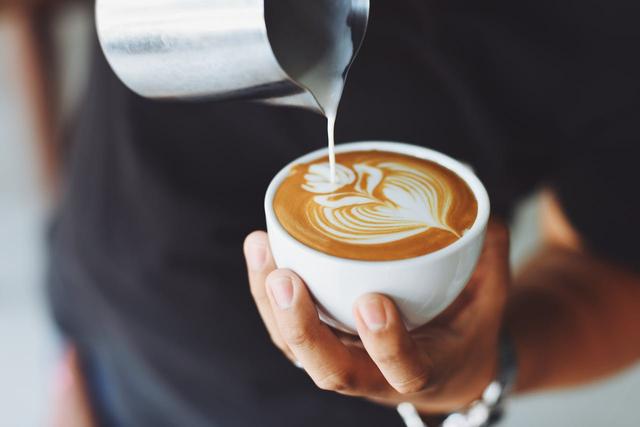Home > Guides > Exploring Coffee Beans and Brew Methods
Exploring Coffee Beans and Brew Methods: A Beginner’s Guide to Arabica, Robusta, and Beyond
Coffee is more than a morning ritual, it’s a global language spoken through beans, roasts, and brewing techniques.
For newcomers, the world of coffee can feel overwhelming, with terms like Arabica, Robusta, and cold brew swirling like steam from a fresh cup.
This guide will demystify the journey from bean to brew, focusing on the two most common coffee species, Coffea arabica and Coffea canephora (Robusta), and how their unique traits shine in different brewing methods.
The Stars of the Coffee World: Arabica and Robusta
Arabica: The Delicate Aristocrat
Arabica beans reign supreme, accounting for roughly 70% of global coffee production. Native to Ethiopia’s high-altitude forests, Arabica plants thrive in tropical climates with consistent rainfall and temperatures between 15–24°C (59–75°F). These beans are celebrated for their complex flavors, which range from fruity and floral to chocolatey, depending on their growing region (a concept called terroir). For example, Ethiopian Arabica might burst with blueberry notes, while Colombian beans offer nutty sweetness.
Arabica’s lower caffeine content (about 1.2% compared to Robusta’s 2.2%) contributes to its smoother, less bitter taste. However, this delicacy comes at a cost: Arabica plants are susceptible to pests and diseases, requiring careful cultivation. Historically, Arabica’s journey from Ethiopia to global dominance began in Yemen, where farmers domesticated wild varieties like Bourbon and Typica. These heirloom strains later spread to Indonesia and the Americas, forming the genetic backbone of modern Arabica cultivation.
Robusta: The Resilient Underdog
Robusta, as the name suggests, is a hardier species. It grows at lower elevations in hot, humid regions like West Africa and Southeast Asia, producing beans with a bold, earthy profile often described as “woody” or “grainy”. While historically overshadowed by Arabica, Robusta’s market share has grown to 40% due to its climate resilience and higher yields. Its robust flavor and thick crema (the golden foam atop espresso) make it a staple in Italian espresso blends and instant coffee.
Robusta’s higher caffeine content acts as a natural pest deterrent, allowing it to thrive in challenging conditions. However, this caffeine also contributes to its bitterness, which many drinkers balance with milk or sugar.
Beyond Arabica and Robusta: Lesser-Known Varieties
While Arabica and Robusta dominate the market, two other species occasionally appear in specialty cafes:
- Liberica: Known for its smoky, floral notes, Liberica thrives in Southeast Asia. Its irregular shape and bold flavor make it a niche choice, often used in Filipino barako coffee.
- Excelsa: Recently reclassified as a Liberica variant, Excelsa offers tart, fruity flavors reminiscent of jackfruit. It’s commonly blended to add complexity.
Brewing Methods: Matching Beans to Techniques
The way you brew coffee can highlight (or hide) a bean’s inherent qualities. Here’s how popular methods interact with Arabica and Robusta:
1. Drip Coffee (Auto-Drip/Pour-Over)
- Best for: Arabica (light to medium roasts).
- Why: Drip brewing’s paper filters trap oils, producing a clean cup that accentuates Arabica’s nuanced acidity and fruitiness. For beginners, a medium grind (like table salt) ensures even extraction without bitterness.
2. French Press
- Best for: Arabica (medium-dark roasts) or Robusta blends.
- Why: This immersion method lets coffee grounds steep directly in hot water, extracting more oils and body. A coarse grind prevents over-extraction, making it ideal for showcasing Arabica’s caramel notes or mellowing Robusta’s intensity.
3. Espresso
- Best for: Robusta or Arabica-Robusta blends.
- Why: High pressure and fine grinding create a concentrated shot with crema. Robusta’s boldness cuts through milk in drinks like lattes, while its caffeine kick provides an extra boost.
4. Cold Brew
- Best for: Arabica (light roasts) or Excelsa blends.
- Why: Steeping coarsely ground beans in cold water for 12–24 hours produces a smooth, low-acid brew. Light-roast Arabica retains its bright flavors, while Excelsa adds tropical fruit undertones.
Roast Levels: Transforming Flavor Profiles
Roasting unlocks a bean’s potential, with each level catering to different preferences:
- Light Roast: Preserves Arabica’s origin flavors (e.g., floral, citrus). Ideal for pour-over or AeroPress.
- Medium Roast: Balances acidity and body, often used in drip coffee. Enhances chocolatey notes in Arabica.
- Dark Roast: Masks bitterness in Robusta, creating smoky, caramelized flavors perfect for espresso or French press.
Decoding Coffee Jargon
- Single Origin: Beans from one farm/region, highlighting terroir (e.g., Ethiopian Yirgacheffe).
- Blend: A mix of beans from multiple origins, crafted for balance (e.g., espresso blends combining Arabica’s sweetness with Robusta’s crema).
- Direct Trade: Roasters buying straight from farmers, ensuring fair pay and quality.
- Fair Trade: Certification guaranteeing farmers meet labor/environmental standards.
The Future of Coffee Beans
Climate change is reshaping coffee agriculture. Arabica’s sensitivity to temperature fluctuations has spurred interest in hybrid varieties and Robusta’s drought tolerance. Meanwhile, initiatives like the Specialty Coffee Association promote sustainable farming to preserve heirloom Arabica strains.
Conclusion: Your Coffee, Your Journey
Whether you’re sipping a fruity Ethiopian pour-over or a robust Vietnamese cà phê đá (iced coffee with condensed milk and Robusta), understanding beans and brews deepens appreciation. Start with a medium-roast Arabica for drip coffee, then experiment with Robusta in espresso.
Remember: the “best” coffee is the one you enjoy most, no jargon required.
As the global coffee community grows, so does our shared vocabulary. From the highlands of Ethiopia to your local café, every cup tells a story. Now that you’re equipped with the basics, it’s time to brew your own chapter.



